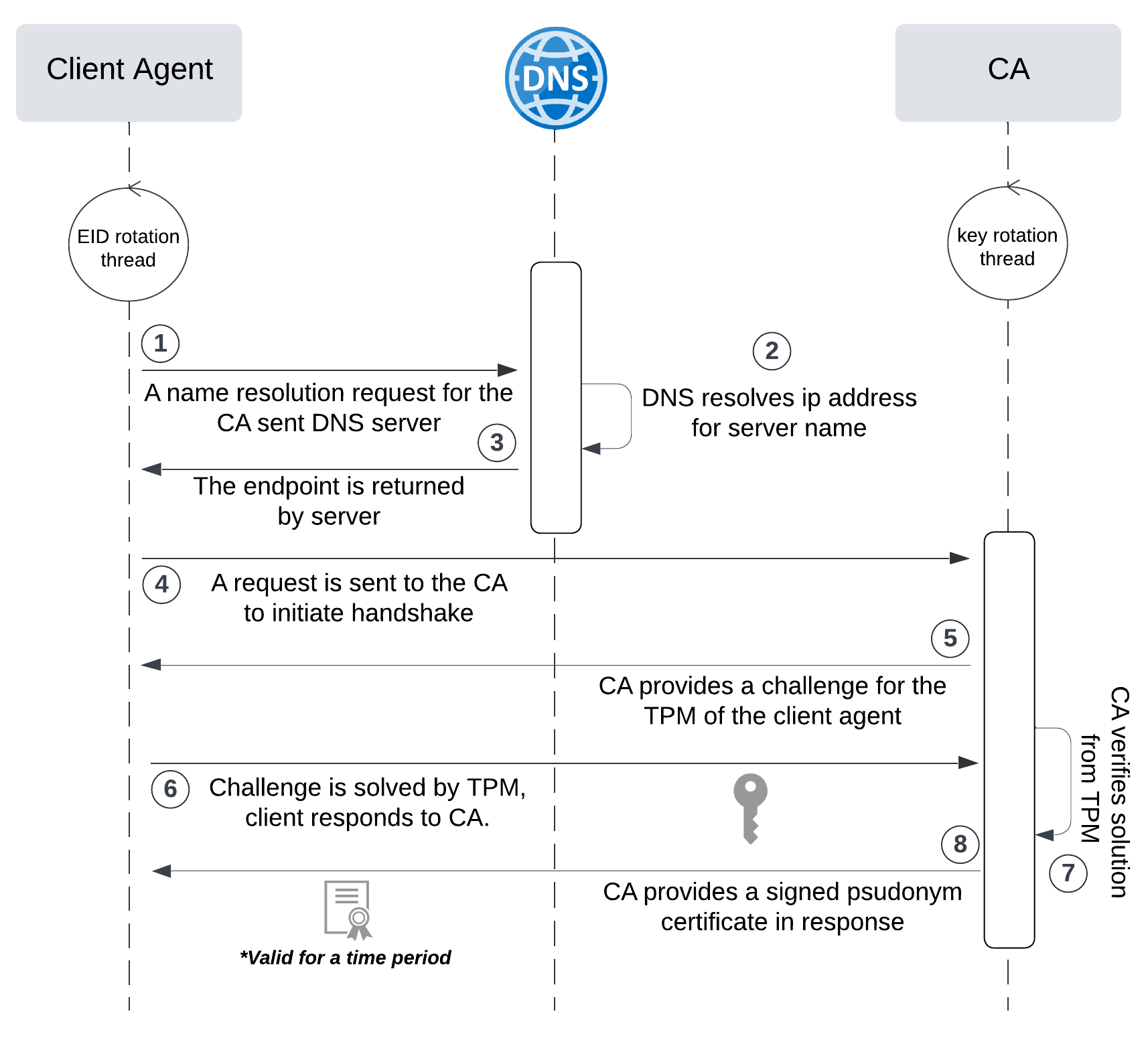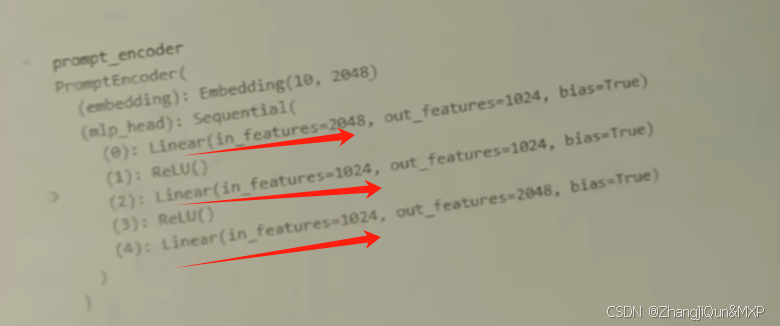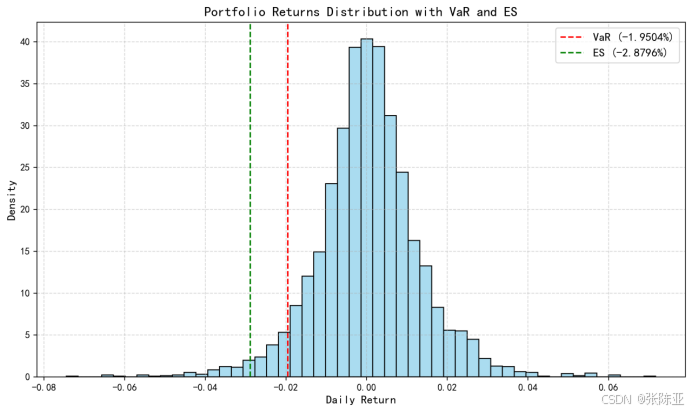北邮22信通:你是不是在looking for……那串代码?(2)第三章单链表
相信有了第二章顺序表的基础,小伙伴们学习第三章链表应该会轻松一点吧
目录
类模板下的单链表
1.1书上干净完整代码(无增改、适合自己动手实验)
1.2对书上代码的完善和对一些问题的验证和解释代码
1.补全一个函数:
2.this指针:
3.关于printlist函数的一点说明:(增改后代码第117行)
4.getlength函数最后一步为什么是--cnt(增改后代码第136行):
5.增改后代码:
6.增改后代码效果图:
7.增改后代码运行效果:
类模板下的单链表
1.1书上干净完整代码(无增改、适合自己动手实验)
下面是书上单链表实现通信录的干净完整代码,基本一字不差~ 有需要的友友可以拿走~
#include <iostream>
using namespace std;class phonebook
{
private:int ID;string name;string phone;string group;
public:phonebook() {};phonebook(int ID, string name, string phone, string group){this->ID = ID;this->name = name;this->phone = phone;this->group = group;}void print(){cout << this->ID << " " << this->name << " "<< this->phone << " " << this->group << endl;}bool operator==(phonebook& p){return (p.ID == this->ID) ? true : false;}
};template<class temp>
struct node
{temp data;node* next;
};template <class temp>
class linklist
{
private:node<temp>* front;
public:linklist(){this->front = new node<temp>;this->front->next = nullptr;}linklist(temp a[], int n);~linklist();void printlist();int getlengh() {};node<temp>* get(int i);int locate(temp x);void insert(int i, temp x);temp del(int i);
};//头插法
template<class temp>
linklist<temp>::linklist(temp a[], int n)
{this->front = new node<temp>;this->front->next = NULL;for (int i = n - 1; i >= 0; i--){node<temp>* s = new node<temp>;s->data = a[i];s->next = this->front->next;this->front->next = s;}
}//尾插法
/*
template<class temp>
linklist<temp>::linklist(temp a[], int n)
{this->front = new node<temp>;node<temp>* r = this->front();for (int i = 0; i < n; i++){node<temp>* s = new node<temp>;s->data = a[i];r->next = s;r = s;}r->next = NULL;
}
*/template<class temp>
linklist<temp>::~linklist()
{node<temp>* p = this->front;while (p != NULL){this->front = p;p = p->next;delete front;}
}template<class temp>
void linklist<temp>::printlist()
{node<temp>* p = this->front->next;while (p != NULL){p->data.print();//数据域中的print方法(需要用户自定义)p = p->next;}cout << endl;
}//按位置查找,返回地址
template<class temp>
node<temp>* linklist<temp>::get(int i)
{node<temp>* p = this->front->next;int j = 1;while (p != NULL && j != i){p = p->next;j++;}return p;
}//按值查找,返回位置
template<class temp>
int linklist<temp>::locate(temp x)
{node<temp>* p = this->front->next;int j = 1;while (p != NULL){if (p->data == x)return j;p = p->next;j++;}return -1;//如果没有找到,返回无效值
}template <class temp>
void linklist<temp>::insert(int i, temp x)
{node<temp>* p = this->front;if (i != 1)p = get(i - 1);//get(i - 1)表示要插入的位置的前一个结点地址if (p != NULL){node<temp>* s = new node<temp>;s->data = x;s->next = p->next;p->next = s;}else{cout << "插入位置错误:" << endl;exit(0);}
}template<class temp>
temp linklist<temp>::del(int i)
{node<temp>* p = this->front;if (i != 1)p = get(i - 1);node<temp>* q = p->next;p->next = q->next;temp x = q->data;delete q;return x;
}int main()
{phonebook pbook[4] ={{20181208,"mary","13011221827","classmates"},{20181127,"tom","13934621123","family"},{20181156,"john","1324579880","classmates"},{20181133,"lisa","1378001822","teacher"}};phonebook record(20181209, "phoenix", "1590209020", "teacher");linklist<phonebook>list(pbook, 4);cout << "通信录内容列表:" << endl;list.printlist();list.insert(1, record);cout << "通信录内容列表:" << endl;list.printlist();phonebook x = list.del(3);cout << "删除元素:" << endl;x.print();cout << "通信录内容列表:" << endl;list.printlist();int p = list.locate(record);cout << "phoenix的位置是:" << p << endl;return 0;
}代码效果图:

运行效果图:

1.2对书上代码的完善和对一些问题的验证和解释代码
(自己增改部分已经在代码中标明,有助于友友们对问题的理解)
1.补全一个函数:
书上没有对getlength函数做定义,本代码已经补全;
2.this指针:
“this->”,是个指针,p用没有,就是本人觉得写着顺手,看代码的时候直接忽略即可~
3.关于printlist函数的一点说明:(增改后代码第117行)
为什么printlist函数是从this->front->next开始打印数据,而不是this->front呢?
因为无论在显示构造函数还是隐式构造函数中,都没有对头结点的数据域赋值。
如果我们将this->front->next改成this->front:程序不会报错,但是会在头结点数据域输出的位置输出一串乱码。这代表头结点的存储地址。
为了便于验证,我们在linklist中添加了getfront函数,用来输出头结点的数据域。
(见增改后代码第51行函数声明)验证结果已在运行框中显示。
4.getlength函数最后一步为什么是--cnt(增改后代码第136行):
其实有了说明3的解释,相信大家应该都能大概明白,这个顺序表的实际长度确实是cnt的,但是因为头结点默认不存放有效数据,所以考虑有效长度时不将其算在内。
5.增改后代码:
#include <iostream>
using namespace std;class phonebook
{
private:int ID;string name;string phone;string group;
public:phonebook() {};phonebook(int ID, string name, string phone, string group){this->ID = ID;this->name = name;this->phone = phone;this->group = group;}void print(){cout << this->ID << " " << this->name << " "<< this->phone << " " << this->group << endl;}bool operator==(phonebook& p){return (p.ID == this->ID) ? true : false;}
};template<class temp>
struct node
{temp data;node* next;
};template <class temp>
class linklist
{
private:node<temp>* front;
public:linklist(){this->front = new node<temp>;this->front->next = nullptr;}linklist(temp a[], int n);~linklist();temp getfront();//自己增加部分 书上无void printlist();int getlengh();node<temp>* get(int i);int locate(temp x);void insert(int i, temp x);temp del(int i);
};//头插法
template<class temp>
linklist<temp>::linklist(temp a[], int n)
{this->front = new node<temp>;this->front->next = NULL;for (int i = n - 1; i >= 0; i--){node<temp>* s = new node<temp>;s->data = a[i];s->next = this->front->next;this->front->next = s;}
}//尾插法
/*
template<class temp>
linklist<temp>::linklist(temp a[], int n)
{this->front = new node<temp>;node<temp>* r = this->front();for (int i = 0; i < n; i++){node<temp>* s = new node<temp>;s->data = a[i];r->next = s;r = s;}r->next = NULL;
}
*/template<class temp>
linklist<temp>::~linklist()
{node<temp>* p = this->front;while (p != NULL){this->front = p;p = p->next;delete front;}
}//自己增加部分 书上无
template<class temp>
temp linklist<temp>::getfront()
{node<temp>* p = front;temp x = p->data;return x;
}template<class temp>
void linklist<temp>::printlist()
{node<temp>* p = this->front->next;//见说明3.while (p != NULL){p->data.print();//数据域中的print方法(需要用户自定义)p = p->next;}cout << endl;
}template<class temp>
int linklist<temp>::getlengh()
{node<temp>* p = this->front;int cnt = 0;while (p != NULL){p = p->next;cnt++;}return --cnt;//见说明4
}//按位置查找,返回地址
template<class temp>
node<temp>* linklist<temp>::get(int i)
{node<temp>* p = this->front->next;int j = 1;while (p != NULL && j != i){p = p->next;j++;}return p;
}//按值查找,返回位置
template<class temp>
int linklist<temp>::locate(temp x)
{node<temp>* p = this->front->next;int j = 1;while (p != NULL){if (p->data == x)return j;p = p->next;j++;}return -1;//如果没有找到,返回无效值
}template <class temp>
void linklist<temp>::insert(int i, temp x)
{node<temp>* p = this->front;if (i != 1)p = get(i - 1);//get(i - 1)表示要插入的位置的前一个结点地址if (p != NULL){node<temp>* s = new node<temp>;s->data = x;s->next = p->next;p->next = s;}else{cout << "插入位置错误:" << endl;exit(0);}
}template<class temp>
temp linklist<temp>::del(int i)
{node<temp>* p = this->front;if (i != 1)p = get(i - 1);node<temp>* q = p->next;p->next = q->next;temp x = q->data;delete q;return x;
}int main()
{phonebook pbook[4] ={{20181208,"mary","13011221827","classmates"},{20181127,"tom","13934621123","family"},{20181156,"john","1324579880","classmates"},{20181133,"lisa","1378001822","teacher"}};phonebook record(20181209, "phoenix", "1590209020", "teacher");linklist<phonebook>list(pbook, 4);cout << "通信录内容列表:" << endl;list.printlist();//自己增加部分 书上无cout << "验证头结点数据无效:" << endl;phonebook y = list.getfront();cout << "头结点数据为:" << endl;y.print();cout << endl;list.insert(1, record);cout << "通信录内容列表:" << endl;list.printlist();phonebook x = list.del(3);cout << "删除元素:" << endl;x.print();cout << "通信录内容列表:" << endl;list.printlist();int p = list.locate(record);cout << "phoenix的位置是:" << p << endl;//自己增加部分 书上无cout << "通信录的长度为:" << endl;cout << list.getlengh();return 0;
}6.增改后代码效果图:

7.增改后代码运行效果:

上一篇文章:数据结构与算法 第二章 顺序表 请参考以下链接 ~
https://blog.csdn.net/bc202205/article/details/129311232?spm=1001.2014.3001.5501
写码不易,关注一下作者再走呗o(╥﹏╥)o
谢谢支持~
相关文章:

北邮22信通:你是不是在looking for……那串代码?(2)第三章单链表
相信有了第二章顺序表的基础,小伙伴们学习第三章链表应该会轻松一点吧 目录 类模板下的单链表 1.1书上干净完整代码(无增改、适合自己动手实验) 1.2对书上代码的完善和对一些问题的验证和解释代码 1.补全一个函数: 2.this指…...

蓝库云|告诉你传统产业该如何进行数字化转型
在后疫情时代下,企业该如何在面临生存危机的情形下,投入「数字化转型」、提升公司竞争力,已成为许多公司的当务之急,但到底什么是数字化转型呢?传统产业又如何着手进行数位转型? 数字化转型是什么…...

121.(leaflet篇)leaflet结合echarts4迁徙图
听老人家说:多看美女会长寿 地图之家总目录(订阅之前建议先查看该博客) 文章末尾处提供保证可运行完整代码包,运行如有问题,可“私信”博主。 效果如下所示: 下面献上完整代码,代码重要位置会做相应解释 <!DOCTYPE html> <html>...

链表及其基本操作
1.单链表:1.1定义/性质:链表是线性表的链式存储方式。单链表通过指针线性遍历,删除/增加节点时间复杂度为O(1),访问节点时间复杂度为O(n)。单链表分为带头结点和不带头结点两种,带头结点是为了方便统一操作(…...

【Java基础 下】 031 -- 反射 动态代理
一、什么是反射? 换句话说就是(从类里拿出来) 可以获取到:(利用反射,我们可以获取到类中所有的东西) 获取是先从class字节码文件中获取的 二、获取class对象的三种方式 三种方式也对应了三种阶段…...

springcloud3 GateWay
一 GateWay 1.1 GateWay的作用 gateway相当于所有服务的门户,将客户端请求与服务端应用相分离,客户端请求通过gateway后由定义的路由和断言进行转发,路由代表需要转发请求的地址,断言相当于请求这些地址时所满足的条件ÿ…...

万字长文:Stable Diffusion 保姆级教程
万字长文:Stable Diffusion 保姆级教程 2022年绝对是人工智能爆发的元年,前有 stability.ai 开源 Stable Diffusion 模型,后有 Open AI 发布 ChatGPT,二者都是里程碑式的节点事件,其重要性不亚于当年苹果发布iPhone&a…...

WAMP搭建靶场
WAMP W:windows A:apache M:mysql,mariadb P:php 1. 下载phpstudy Windows版phpstudy下载 - 小皮面板(phpstudy) 2. 安装phpstudy 默认安装即可 3. 下载DVWA靶场 https://github.com/digininja/DVWA/archive/…...

Uipath Excel 自动化系列13-ForEachExcelSheet(遍历Sheet)
活动描述 ForEachExcelSheet(遍历Sheet):遍历Excel中的工作表,可以对 Excel 工作簿中的每个工作表重复一个或多个活动,该活动需与Use Excel File 活动选择的 Excel 文件一起使用。 使用场景:当处理包含多张工作表的 Excel 文件,…...

JDBC快速入门
🍎道阻且长,行则将至。🍓 目录 一、JDBC入门 1.概述 (1)JDBC本质 (2)JDBC好处 2.快速入门 (1)步骤 (2)实践 (3)两个小问题 一、JDBC入门 1.概述 JDBC就是使用Java语言操作关系型数据库的一套API,全称:( Java…...

蓝桥杯三月刷题 第六天
文章目录💥前言😉解题报告💥星期计算🤔一、思路:😎二、代码:💥考勤刷卡🤔一、思路:😎二、代码:💥卡片🤔一、思路:😎二、代…...

分享几个常用的运维 shell 脚本
今天咸鱼给大家分享几个不错的 Linux 运维脚本,这些脚本中大量使用了 Linux 的文本三剑客: awkgrepsed 建议大家这三个工具都要了解并最好能够较为熟练的使用 根据 PID 显示进程所有信息 根据用户输入的PID,过滤出该PID所有的信息 #! /b…...

分隔链表(精美图示详解哦)
全文目录引言分隔链表题目描述与思路实现总结引言 前面,我们熟悉了管理链表中的数据的方法,也了解了几道与链表相关的题目: 戳我看单链表详解哦 在本篇文章中,我们将再了解一道题目:分隔链表: 分隔链表OJ…...

腾讯乐固加固+app签名+多渠道打包
一、腾讯乐固-基础版免费加固-上传未加固的app-下载加固包(加固成功会清除原apk的签名信息和多渠道信息)https://console.cloud.tencent.com/ms/reinforce/list/basic二、使用AndroidStudio自带工具apksigner对apk重新签名找到apksigner.bat文件 路径D:\…...
)
Spring Boot整合Redis缓存(Lettuce)
spring-boot-demo-cache-redis 此 demo 主要演示了 Spring Boot 如何整合 redis,操作redis中的数据,并使用redis缓存数据。连接池使用 Lettuce。 Lettuce官网 pom.xml <!-- data-redis --> <dependency><groupId>org.springframework…...

Feign
而Feign则会完全代理HTTP请求,我们只需要像调用方法一样调用它就可以完成服务请求及相关处理。Feign整合了Ribbon和Hystrix,可以让我们不再需要显式地使用这两个组件。 Feign具有如下特性: 支持可插拔的HTTP编码器和解码器; 支持Hystrix和…...

【代码训练营】day54 | 392.判断子序列 115.不同的子序列
所用代码 java 判断子序列 LeetCode 392 题目链接:判断子序列 LeetCode 392 - 简单 思路 这题和之前求最长公共子序列一样。 dp[i] [j]:以i-1为结尾的字符串s 和 以j-1为结尾的字符串t 组成的相同子序列的长度 递推公式: 相等dp[i][j] d…...

【unity3D】创建TextMeshPro(TMP)中文字体(解决输入中文乱码问题)
💗 未来的游戏开发程序媛,现在的努力学习菜鸡 💦本专栏是我关于游戏开发的学习笔记 🈶本篇是unity的TMP中文输入显示乱码的解决方式 创建 TextMeshPro 中文字体遇到的问题描述解决方式Font Asset Creator 面板扩展中文字体文本遇到…...

JAVA开发(JAVA中的异常)
在java开发与代码运行过程中,我们经常会遇到需要处理异常的时候。有时候是在用编辑器写代码,点击保存的时候,编辑器就提示我们某块代码有异常,强制需要处理。有时候是我们启动,运行JAVA代码的时候的,日志里…...

lesson8-Linux多线程
Linux线程概念 线程在进程内部执行,是OS调度的基本单位OS是可以做到让进程进行资源的细粒度划分的物理内存是以4kb为单位的我们的.exe可执行程序本来就是按照地址空间的方式进行编译的页表映射 - 详细图 理解线程 线程在进程的地址空间内运行, 进程内部具有多个执行流的,而线程…...

网络六边形受到攻击
大家读完觉得有帮助记得关注和点赞!!! 抽象 现代智能交通系统 (ITS) 的一个关键要求是能够以安全、可靠和匿名的方式从互联车辆和移动设备收集地理参考数据。Nexagon 协议建立在 IETF 定位器/ID 分离协议 (…...

Prompt Tuning、P-Tuning、Prefix Tuning的区别
一、Prompt Tuning、P-Tuning、Prefix Tuning的区别 1. Prompt Tuning(提示调优) 核心思想:固定预训练模型参数,仅学习额外的连续提示向量(通常是嵌入层的一部分)。实现方式:在输入文本前添加可训练的连续向量(软提示),模型只更新这些提示参数。优势:参数量少(仅提…...
)
【位运算】消失的两个数字(hard)
消失的两个数字(hard) 题⽬描述:解法(位运算):Java 算法代码:更简便代码 题⽬链接:⾯试题 17.19. 消失的两个数字 题⽬描述: 给定⼀个数组,包含从 1 到 N 所有…...

C++ 基础特性深度解析
目录 引言 一、命名空间(namespace) C 中的命名空间 与 C 语言的对比 二、缺省参数 C 中的缺省参数 与 C 语言的对比 三、引用(reference) C 中的引用 与 C 语言的对比 四、inline(内联函数…...

如何在最短时间内提升打ctf(web)的水平?
刚刚刷完2遍 bugku 的 web 题,前来答题。 每个人对刷题理解是不同,有的人是看了writeup就等于刷了,有的人是收藏了writeup就等于刷了,有的人是跟着writeup做了一遍就等于刷了,还有的人是独立思考做了一遍就等于刷了。…...

初学 pytest 记录
安装 pip install pytest用例可以是函数也可以是类中的方法 def test_func():print()class TestAdd: # def __init__(self): 在 pytest 中不可以使用__init__方法 # self.cc 12345 pytest.mark.api def test_str(self):res add(1, 2)assert res 12def test_int(self):r…...

中医有效性探讨
文章目录 西医是如何发展到以生物化学为药理基础的现代医学?传统医学奠基期(远古 - 17 世纪)近代医学转型期(17 世纪 - 19 世纪末)现代医学成熟期(20世纪至今) 中医的源远流长和一脉相承远古至…...

AI病理诊断七剑下天山,医疗未来触手可及
一、病理诊断困局:刀尖上的医学艺术 1.1 金标准背后的隐痛 病理诊断被誉为"诊断的诊断",医生需通过显微镜观察组织切片,在细胞迷宫中捕捉癌变信号。某省病理质控报告显示,基层医院误诊率达12%-15%,专家会诊…...

return this;返回的是谁
一个审批系统的示例来演示责任链模式的实现。假设公司需要处理不同金额的采购申请,不同级别的经理有不同的审批权限: // 抽象处理者:审批者 abstract class Approver {protected Approver successor; // 下一个处理者// 设置下一个处理者pub…...

Python基于历史模拟方法实现投资组合风险管理的VaR与ES模型项目实战
说明:这是一个机器学习实战项目(附带数据代码文档),如需数据代码文档可以直接到文章最后关注获取。 1.项目背景 在金融市场日益复杂和波动加剧的背景下,风险管理成为金融机构和个人投资者关注的核心议题之一。VaR&…...
